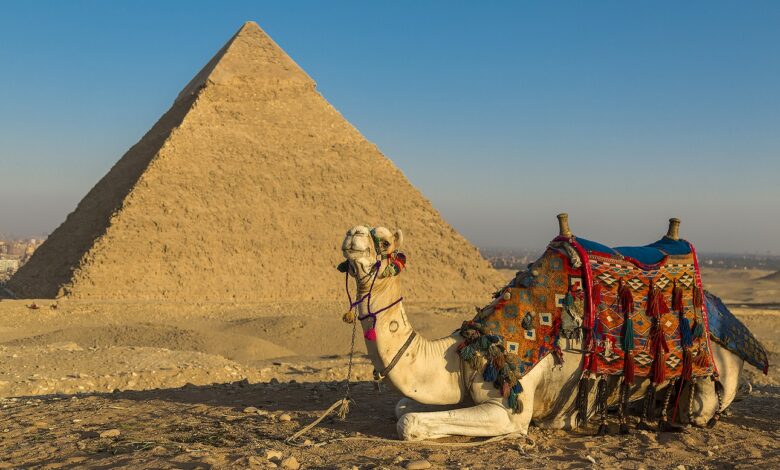
Businessman Naguib Sawiris slammed the presence of camel and horse owners near the Giza Pyramids, after they disrupted the first day of the trial operation for the new Pyramids area services development and entrance project.
The road was blocked by animal owners without decisive intervention from security authorities, consequently halting bus traffic and completely disrupting the system.
In a post on the “X” platform, Sawiris wrote: “Their refusal to go to the designated exercise area, the disruption of the continuous tourist bus route, the horse and camel manure and their foul-smelling waste that offends and pollutes the most important archaeological site in the world make the visit a very bad experience.”
“The solution is that they must go to the exercise area as planned by the state and stay away from the asphalt bus route to avoid obstructing tourists. In case of refusal, they should be completely prevented in order to preserve this historical area, as the public good is more important than 2,000 people who have been harming their country for years,” he added.
The trial operation of the new Pyramids area entrance project, the “Fayoum-Oasis” road, began on Tuesday after the project components were 100 percent finalized.
This step aims to improve the visitor experience and develop the archaeological area of the Pyramids, with the official opening scheduled to coincide with the Grand Egyptian Museum on July 3.
The Secretary-General of the Supreme Council of Antiquities, Mohamed Ismail Khaled, noted that the Pyramids area received 12,000 visitors through the new entrance on the first day of the new system’s operation, an increase of 120 percent compared to the average daily visitor numbers for the area.
The Ministry of Tourism and Antiquities confirmed in a press release that the number of tourist buses operating within the archaeological area have increased.
It noted its prior approval for “Orascom Pyramids” to enhance the transportation system within the area using diesel buses until the remaining agreed-upon electric buses arrive, while continuing to allow the entry of express tour buses into the archaeological site.




